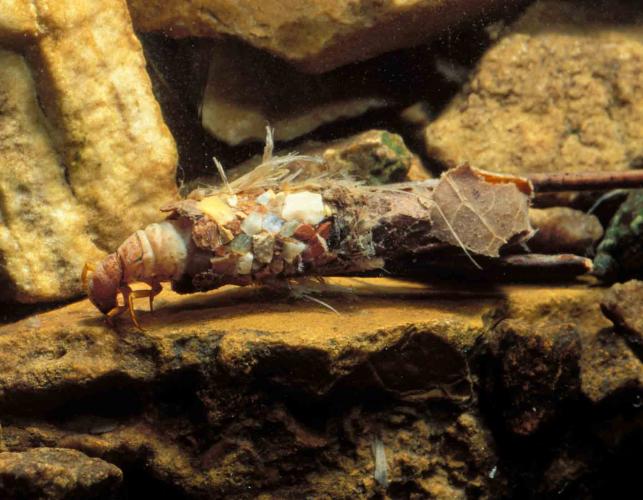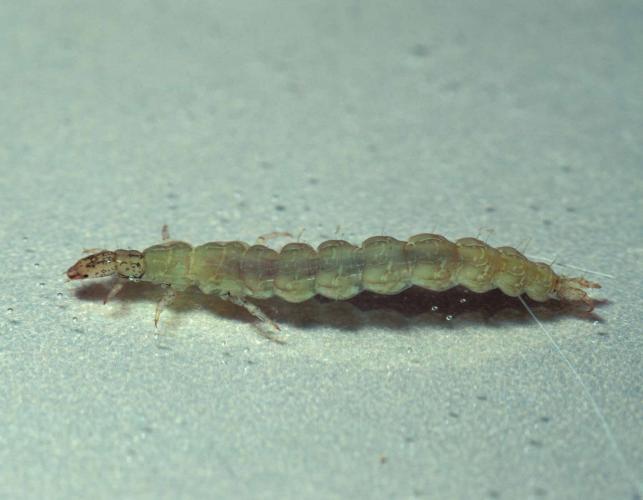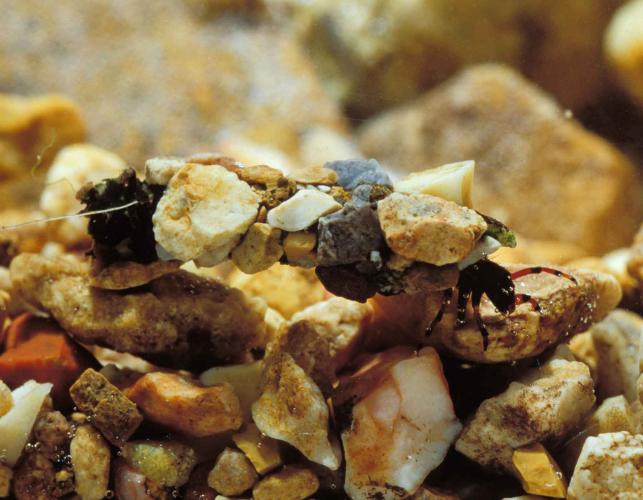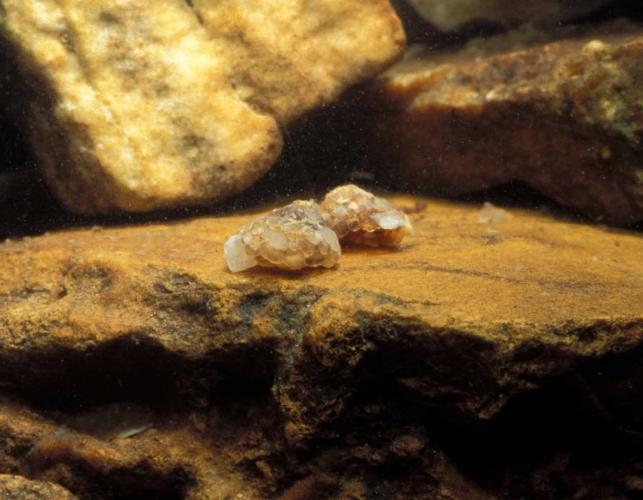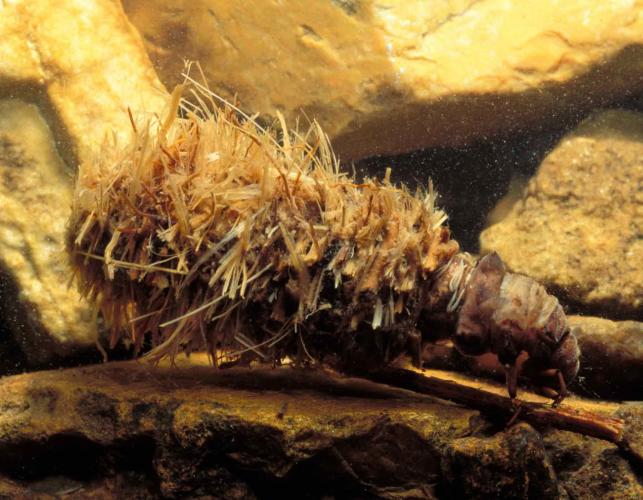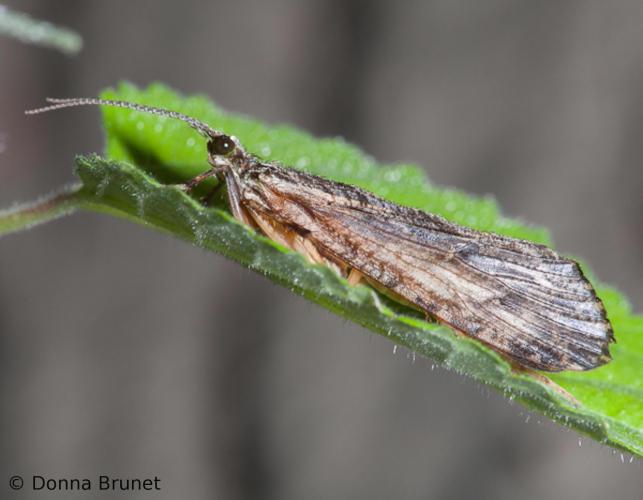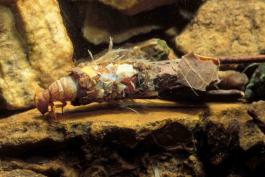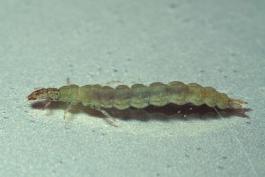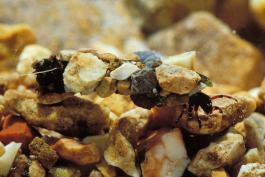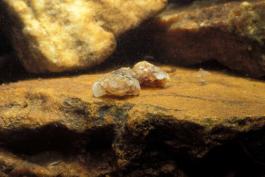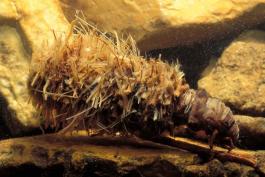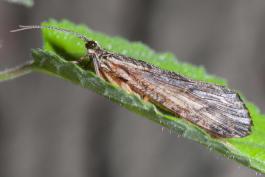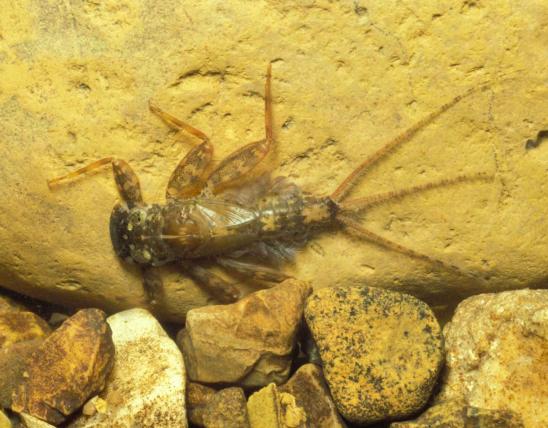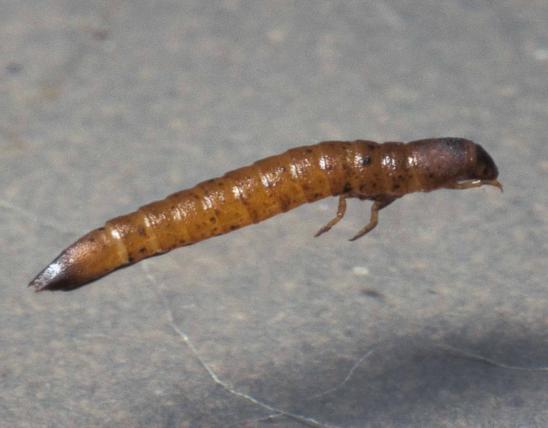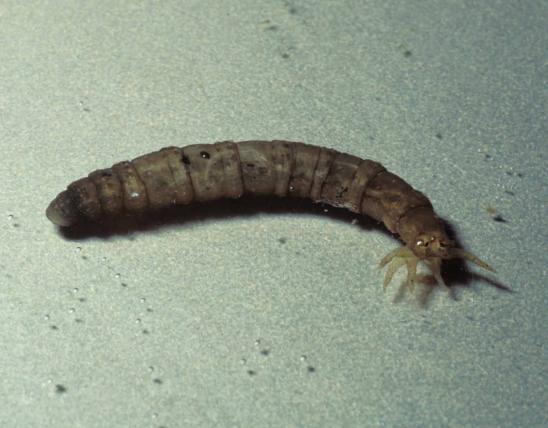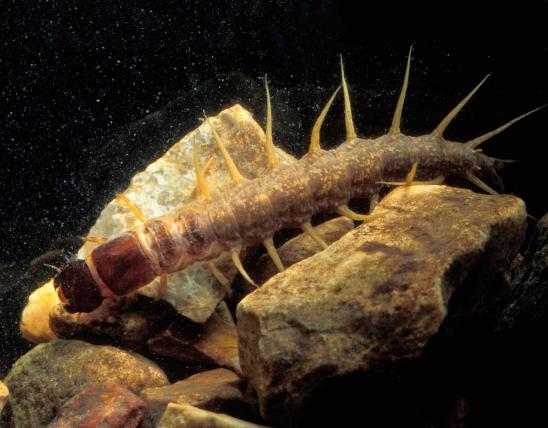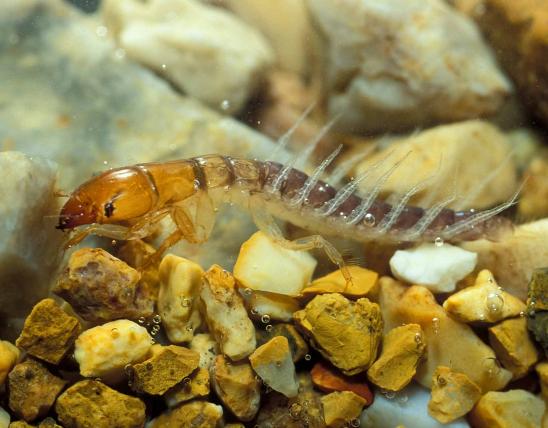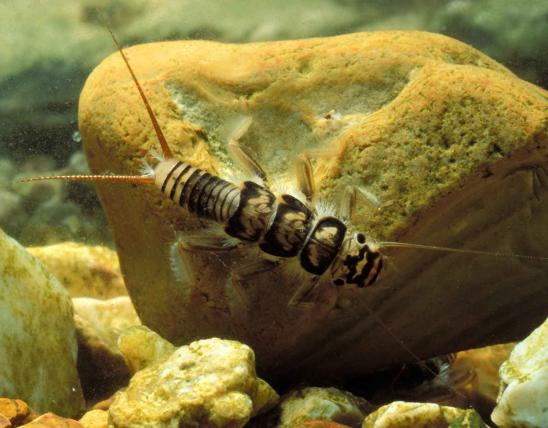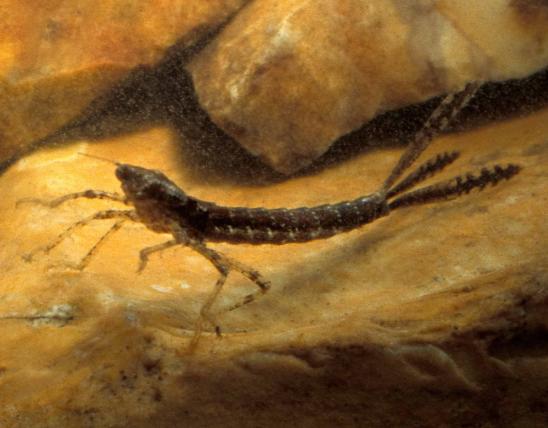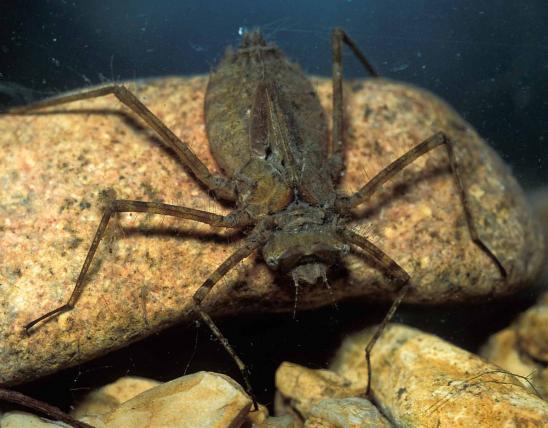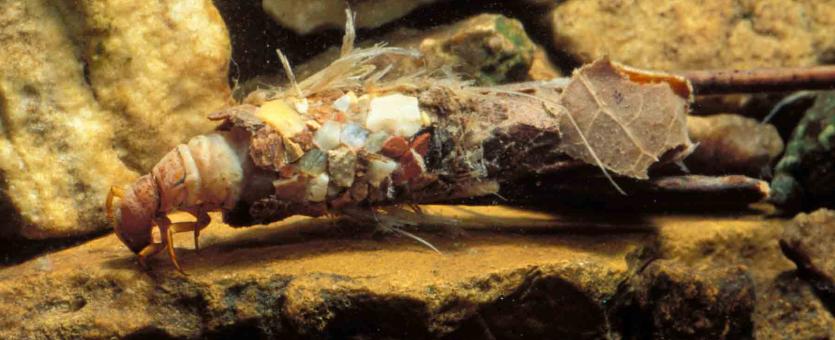
Caddisfly larvae are aquatic, slender, with a segmented abdomen that is usually hidden within a portable protective case. The head has chewing mouthparts, and there are 3 pairs of legs at the front of the body. In most species, the larvae typically create their cases from tiny pieces of plants, sand grains, or other detritus adhered or spun together into a tube or cone. In some species, the cases are spiral like a snail shell. Some species don’t make cases at all.
The adults are mothlike, holding their wings rooflike over their backs. The forewings are hairy (instead of scaly like a moth’s). Colors are usually dark and drab, although the hindwings, usually hidden beneath the forewings, are often clear. The antennae are threadlike, many-segmented, and long, usually as long as the rest of the body.
Larvae length (with case): frequently ½ to 1 inch; adults: to about 1½ inches.
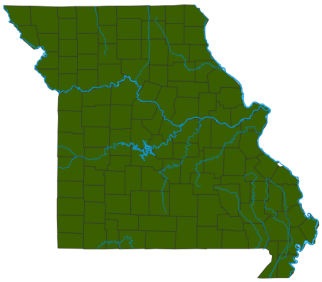
Statewide.
Habitat and Conservation
There is great diversity among American caddisflies, and naturally they can inhabit different habitats. Most creep along rocks and other submerged objects in the clean waters of streams, rivers, and springs, where the movement of the water increases the oxygen level. Others prefer lakes, ponds, and other quiet waters, including marshes. Adults roost in shrubs and other plants during the day and fly at night. Like moths, they are often attracted to artificial lights.
Food
Among the more than 1,000 species of caddisflies in North America, the food habits vary. As larvae, many eat various types of detritus, including bits of leaves, algae, and miscellaneous organic matter. Others are predatory, feeding on aquatic invertebrates and other small prey they can subdue. As adults, many species do not eat at all during their brief time out of water. Those that do eat generally sop nectar from flowers.
Status
Six caddisflies are listed as Missouri Species of Conservation Concern and thus are vulnerable to extirpation from the state. A caddisfly (or caddis fly) is any insect in the order Trichoptera. An insect order is a very large category, larger even than a family. Three other insect orders, for example, are the “ants, bees, and wasps”; the “butterflies and moths”; and the “grasshoppers, katydids, crickets, and cockroaches.” This explains why the name “caddisfly” comprises such a large group!
Life Cycle
Like moths, most caddisflies undergo complete metamorphosis — the immature stages look very different from the winged, adult stage, and the larvae enter a pupal stage before becoming adults. The pupae are usually protected by their casing, which they simply seal up. When that stage is nearly complete, usually in fall, they cut open the case, swim to the surface, undergo the final molt, and begin flying. As adults, they usually only live for a few weeks, do not eat, and focus only on reproduction.
Human Connections
Anglers sometimes use caddisfly adults and lookalike lures as bait, especially at times when caddisfly adults are emerging in great numbers and fish are hunting them. The larvae are sensitive to pollution and thus serve as an indicator of water quality.
Ecosystem Connections
Caddisfly larvae are a link in the aquatic food chain, bridging the gap between the various organic materials they eat and the fish that eat them. Caddisflies connect both aquatic and terrestrial ecosystems. The nonaquatic adults are eaten by birds, reptiles, and other land predators.
